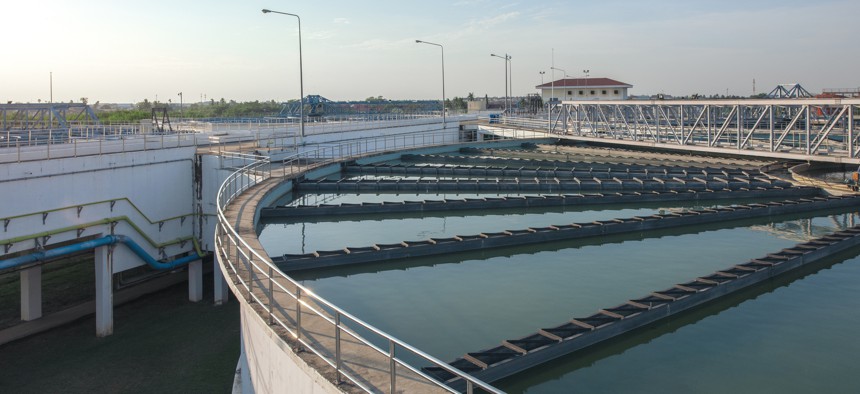Possible cyber regs face fragmented, underfunded water sector

BNBB Studio/Getty Images
The Environmental Protection Agency could give states regulatory authority, but some experts worry rules will become “obsolete” as technology advances.
As water utilities wait for new cybersecurity regulations from the Environmental Protection Agency, some experts worry about giving state governments more oversight power over the fragmented industry, while others warned that any regulations run the risk of not keeping up with evolving cyber threats.
The EPA had a deadline of Aug. 22 under the Bipartisan Infrastructure Law to send Congress its Technical Cybersecurity Support Plan, which would outline its plans for offering cyber support to water systems and list those that it expects to provide support to. An EPA spokesperson declined to offer a firm timeline for the release of the Technical Cybersecurity Support Plan but said in an email he anticipated an update on its status “very soon.”
Meanwhile, the EPA also has plans in the long term to release a regulation entitled, “Cybersecurity in Public Water Systems” that would provide regulatory clarity and promote the adoption of cybersecurity measures by public water systems.
Events on both sides of the Atlantic show the need for urgency on the matter, as a water supplier in the United Kingdom recently disclosed it was hit by a cyberattack, while the water utility for the city of Oldsmar, Florida, suffered an attack last year in which hackers accessed the function to control the levels of sodium hydroxide in the water.
But it could be challenging to regulate such a fragmented industry.
“Regulators struggle with having to regulate across the sector because everyone's at a different starting point,” said Danielle Jablanski, an operational technology cybersecurity strategist at intrusion detection software company Nozomi Networks. “It has to be vague enough that it's not obsolete in terms of where we are today from the threat landscape immediately … [but it can’t be] so prescriptive that it discounts every entity's ability to be able to get on board.”
The majority of water systems are publicly-operated nonprofits, managed by state or local governments and with their rates set by a governing board. Because most publicly operated water systems typically face budget constraints, they are often unable to hire adequate cybersecurity staff. Instead, Padraic O’Reilly, co-founder and chief product officer at cyber risk management software company CyberSaint, said they focus on the operational tech associated with keeping the water supply safe and consistent, and so they may be vulnerable to cyberattacks.
The relative lack of a cybersecurity budget creates vulnerabilities like the one exposed in Oldsmar and has caused alarm at the potential for disruption in this sector of critical infrastructure. As early as March 2020, the bipartisan, bicameral Cyberspace Solarium Commission’s final report warned that “dramatic variations in capacity and sophistication” in the nation’s 70,000 water utilities as they digitize their operations make them “ill-prepared to defend their networks from cyber-enabled disruption.”
The report went on to urge the EPA to better support state and local governments’ efforts to keep water supplies secure, and the White House appeared to be listening to that recommendation when it announced it would delegate responsibility for cybersecurity regulation to state and local authorities.
O’Reilly warned that state regulators are also at different junctures regarding cybersecurity, so in a highly distributed sector like water, there could still be challenges.
“The states have to improve their oversight, and they're not necessarily in the strongest position either,” he said. “I'm a little concerned that passing it off to the states, while it makes sense on paper, because they might have more access and they might have more jurisdiction at the moment, they could potentially drop the ball with respect to requirements,” he said. Plus, with each state regulating its water suppliers according to its own requirements, “how do you get standardization across the board?” he asked.
Regardless of any regulations that come down the pike, Jablanski said water utilities should undertake some basic cybersecurity protections to keep themselves secure against possible cyber threats.
She said that can include actions like segmenting their networks to ensure that their corporate networks are not connected to their operational ones, limiting vendors’ remote access to prevent unauthorized intrusions and ensuring they have a vulnerability disclosure program – small steps to bolstering a water company’s cybersecurity.
“Those broader campaigns, everyone can get behind and understand and start to make incremental progress on, [but] it's not going to solve the problem overnight,” Jablanski said. “But it will set entities up for more success than more prescriptive, top-down regulations that they might not be able to afford.”






